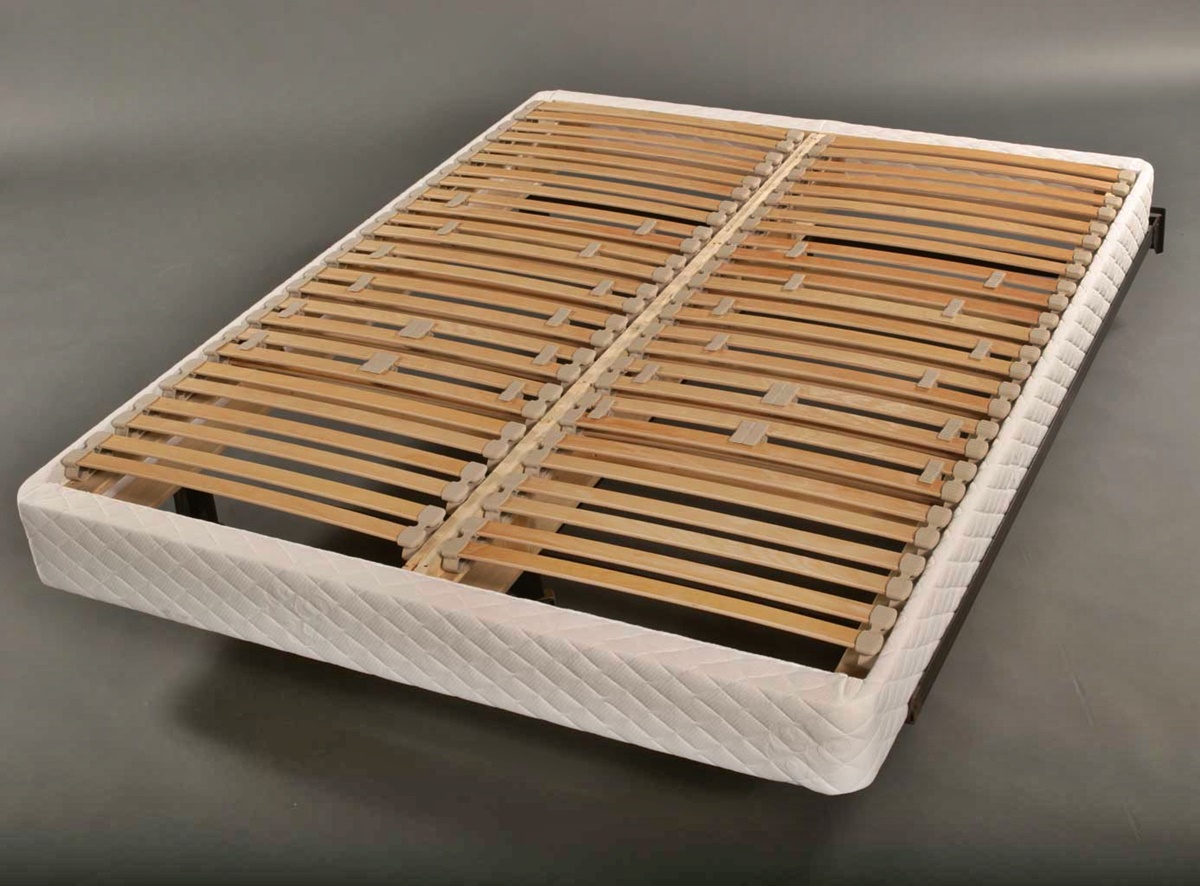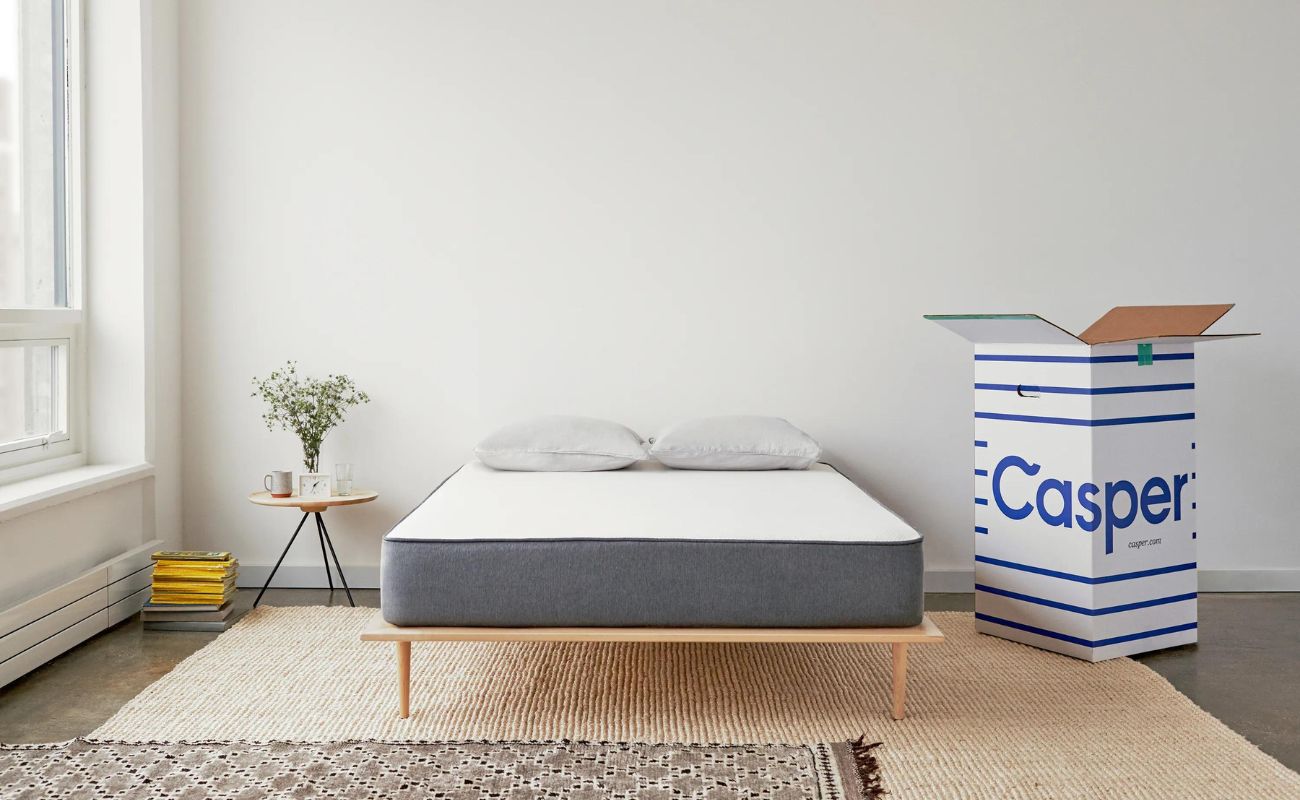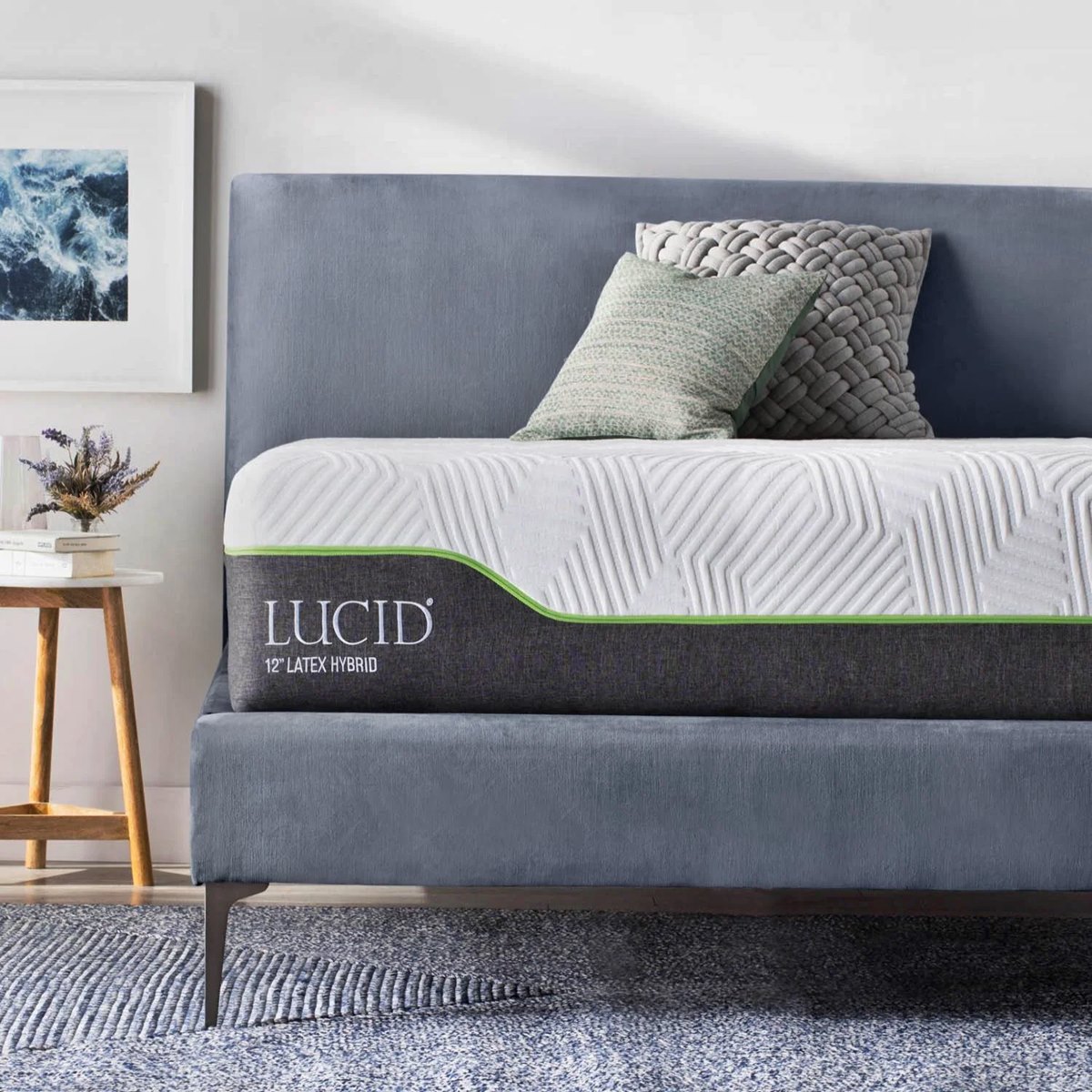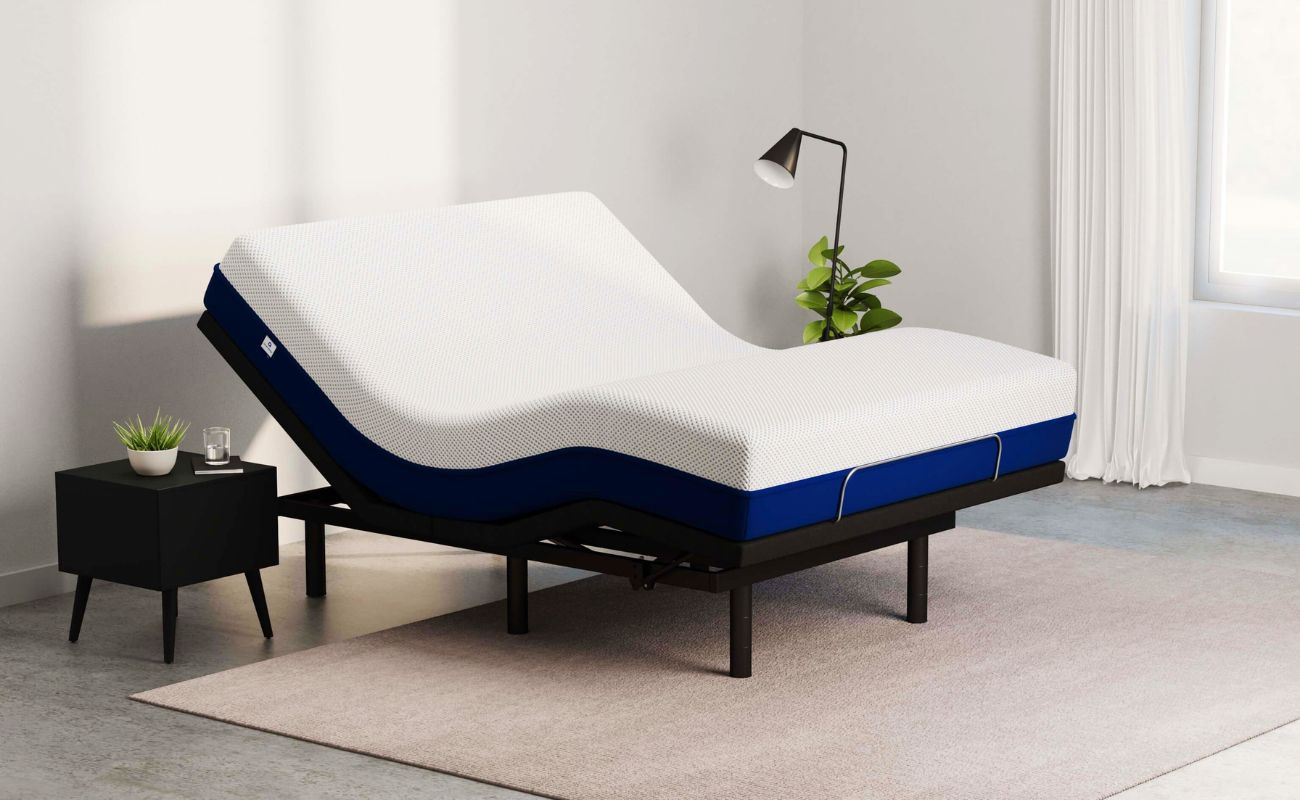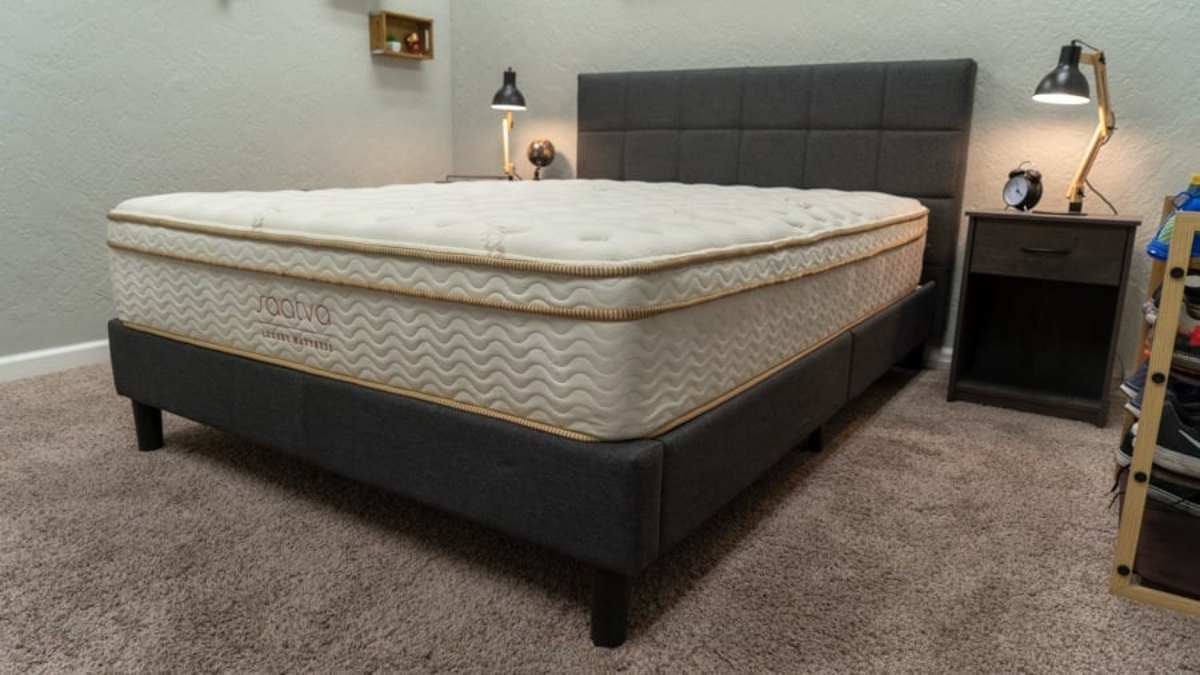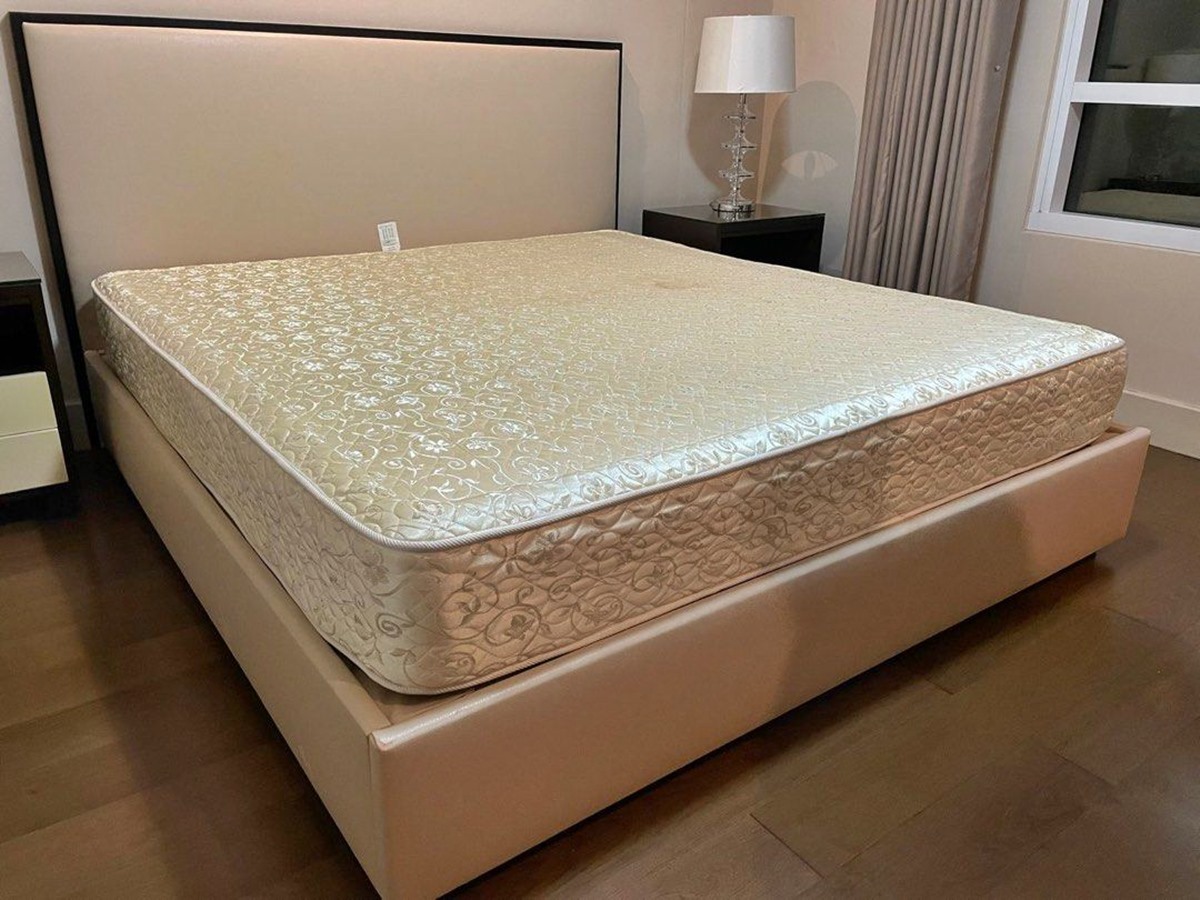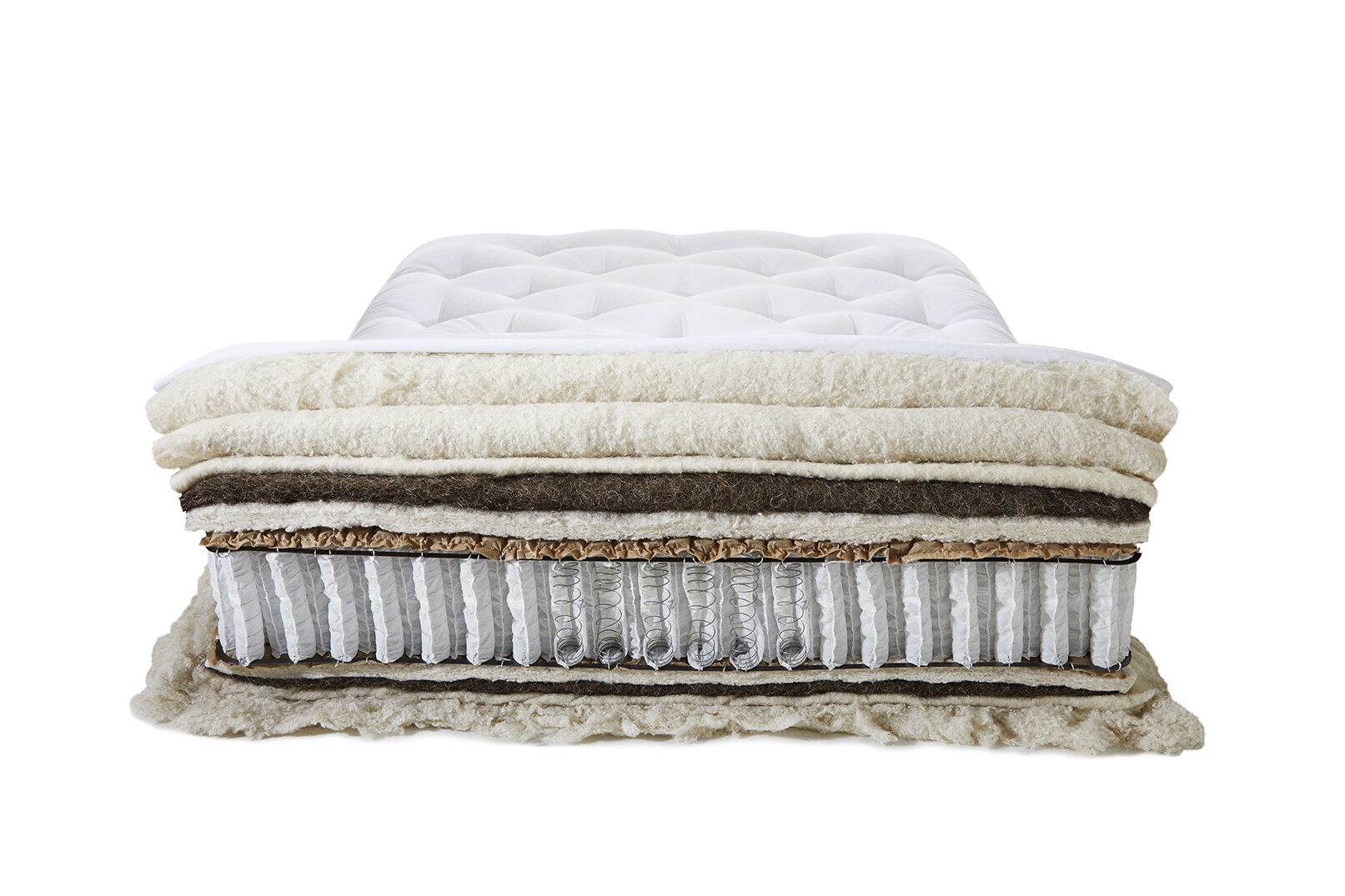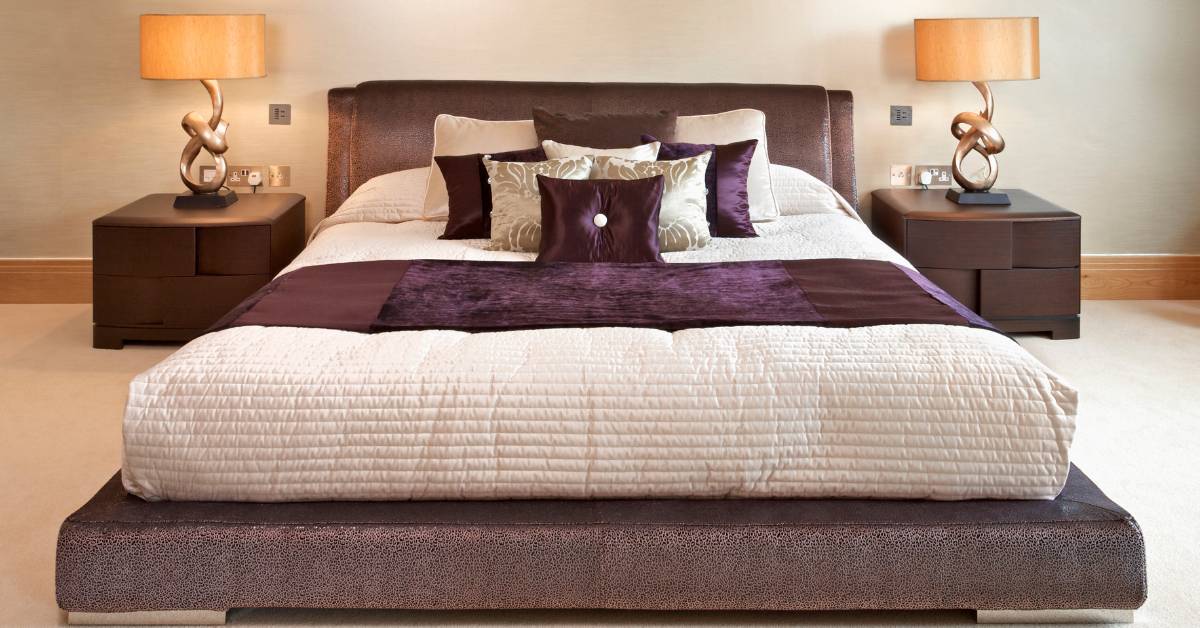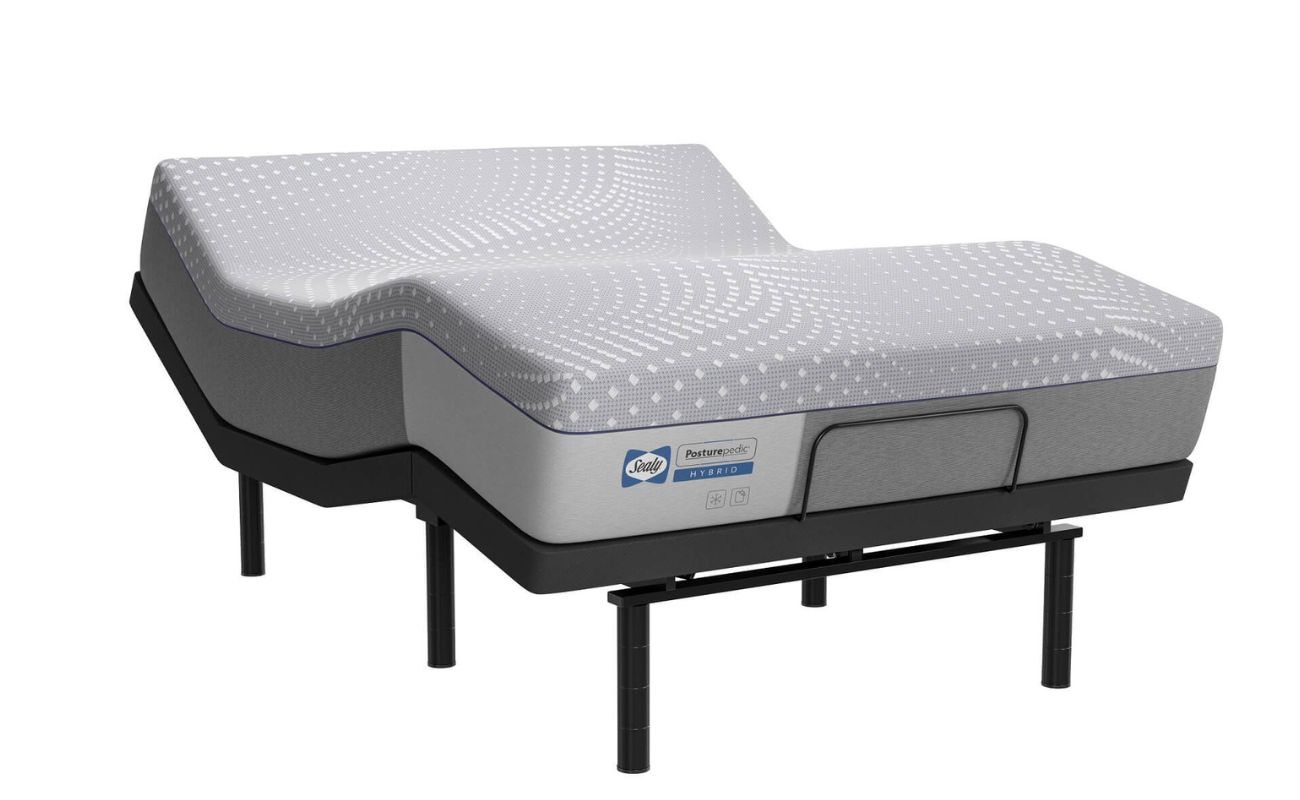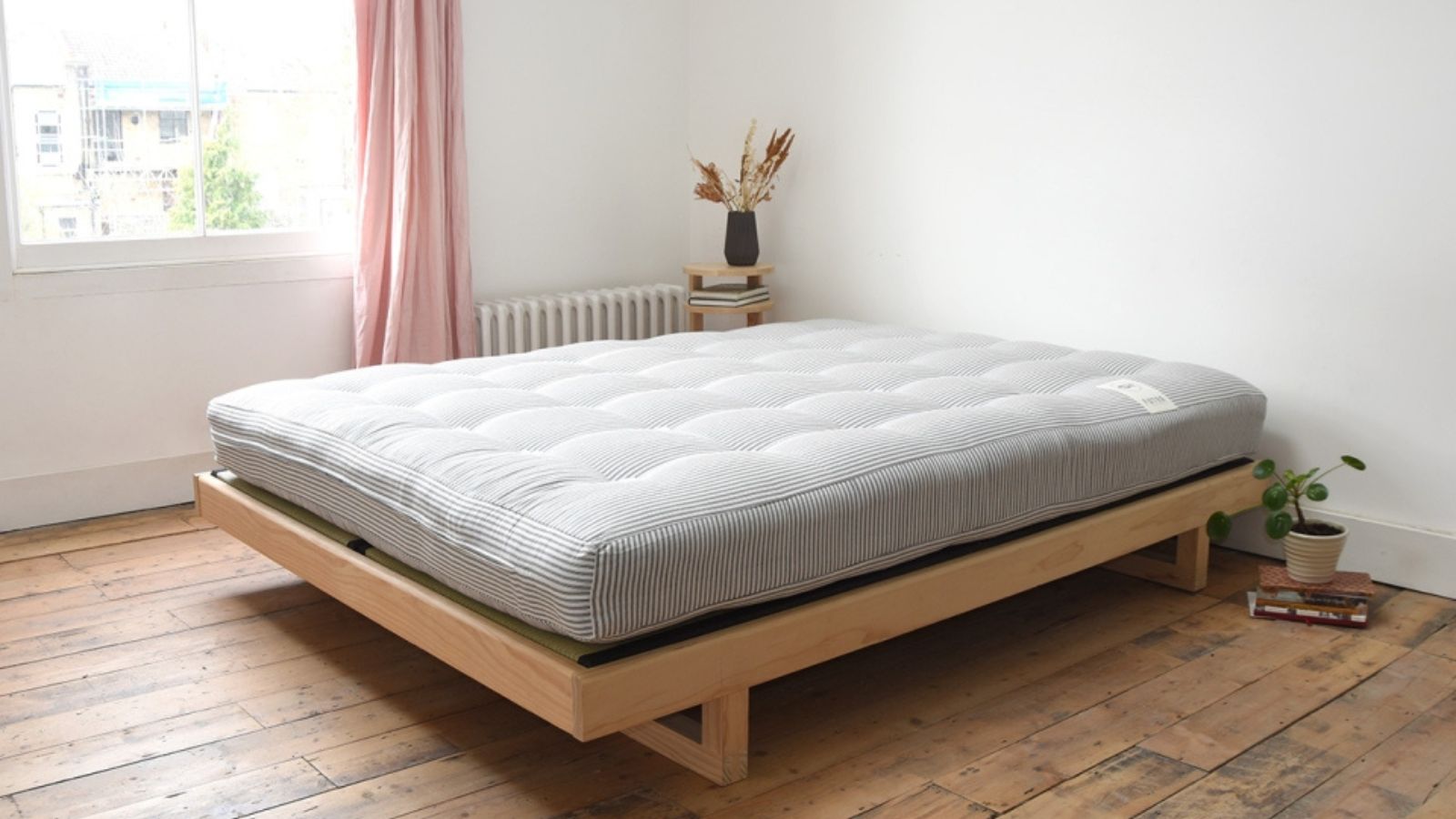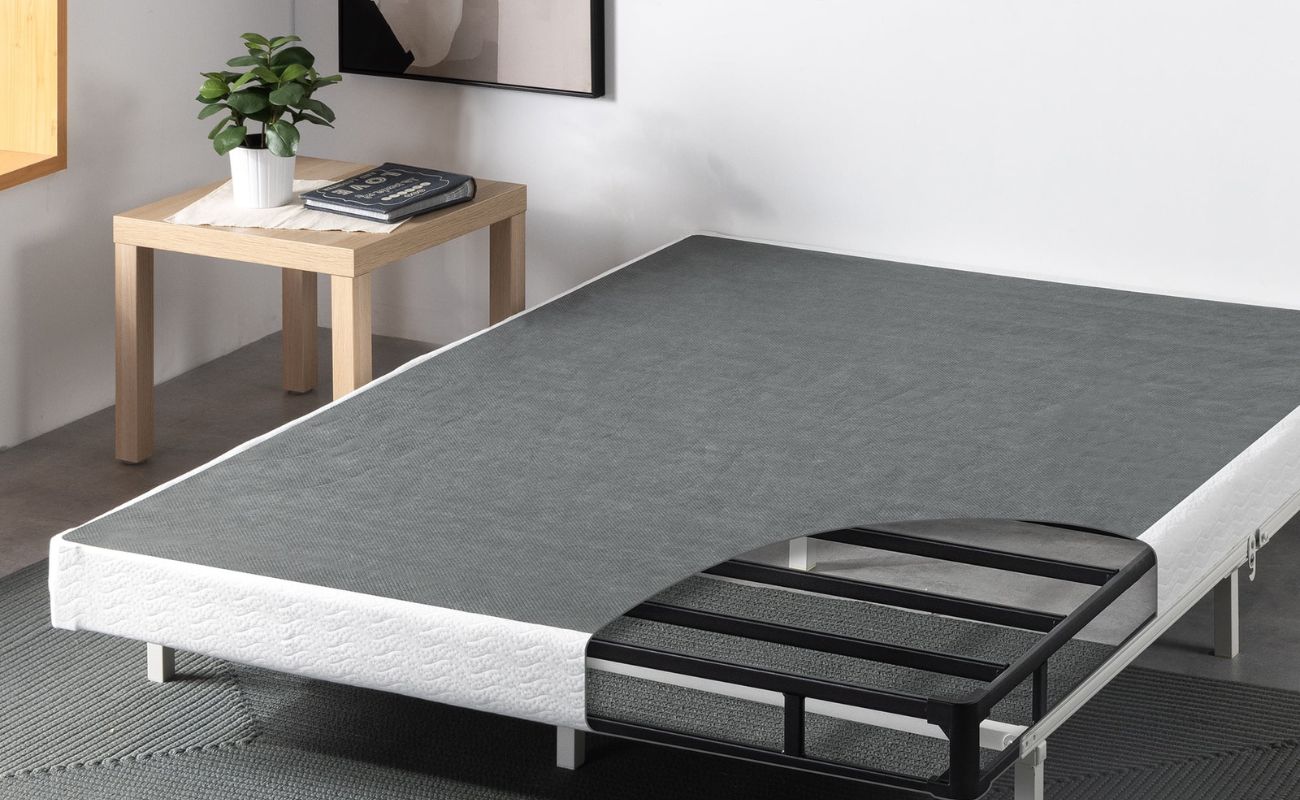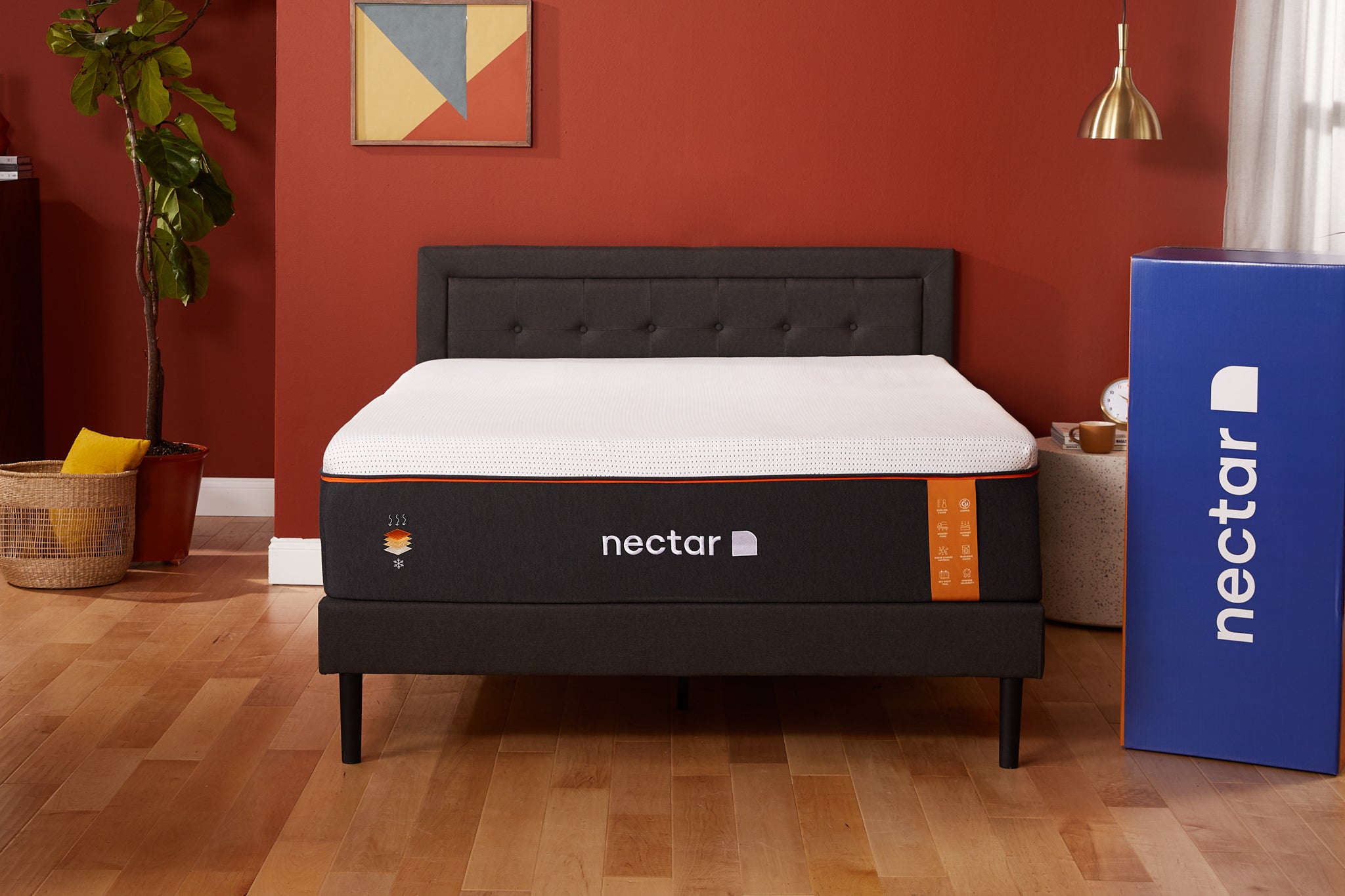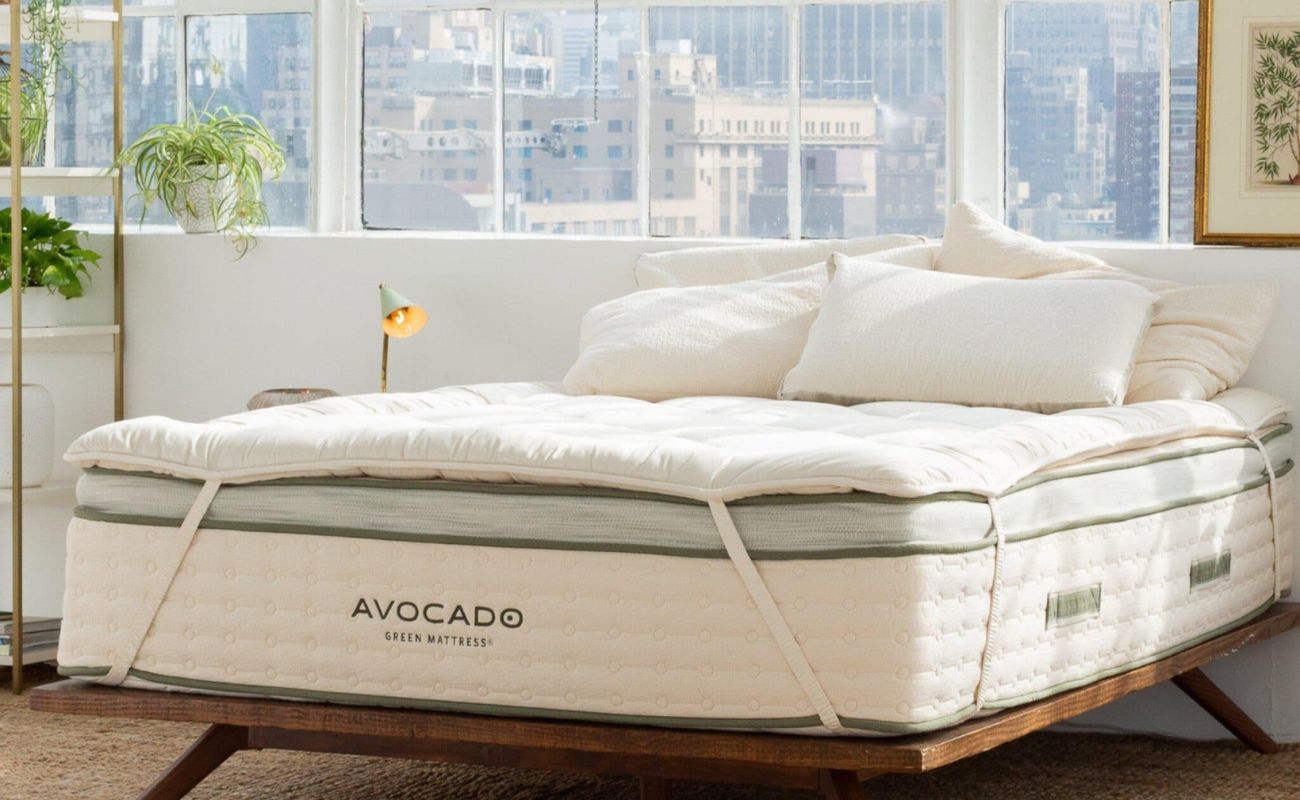Home>Furniture>Bedroom Furniture>What Is An Innerspring Mattress
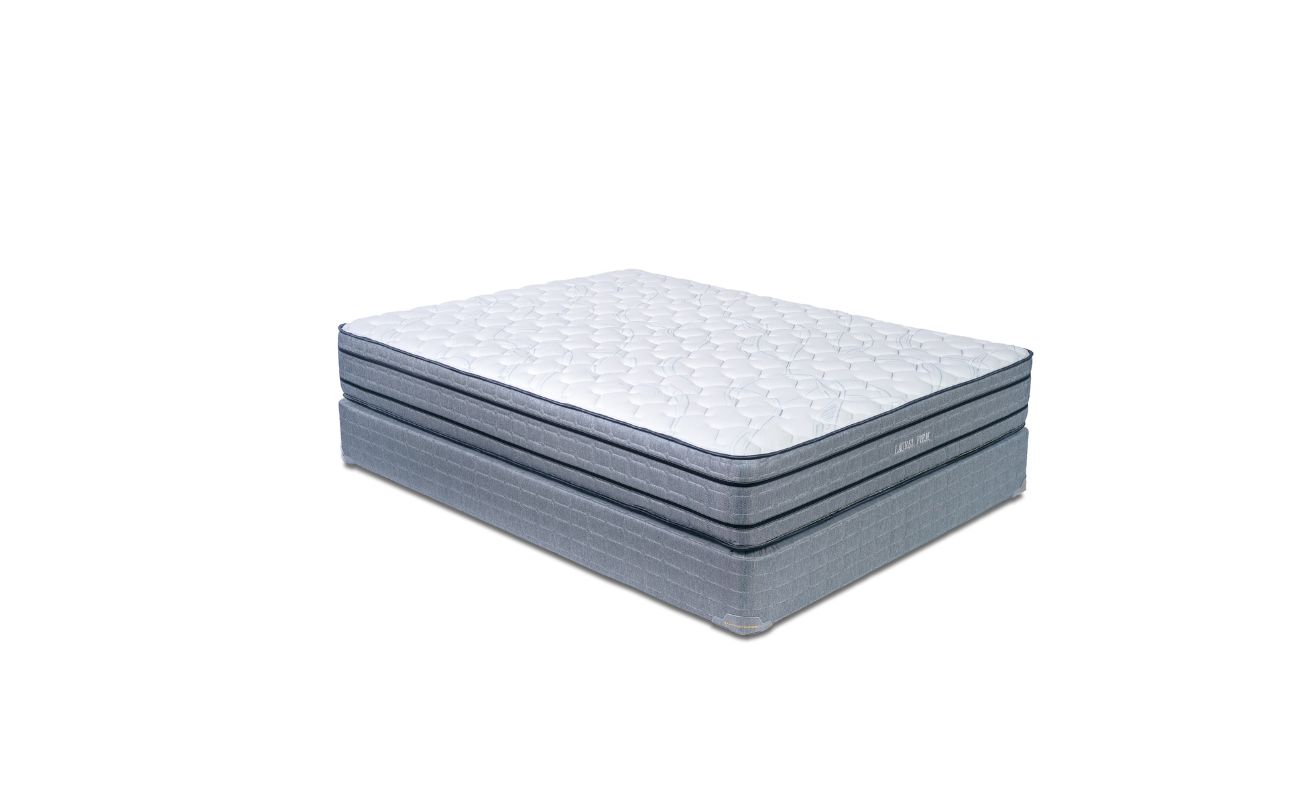

Bedroom Furniture
What Is An Innerspring Mattress
Modified: February 25, 2024
Discover the benefits of an innerspring mattress for your bedroom furniture. Find out what sets this type of mattress apart and how it can provide the comfort and support you need for a restful night's sleep.
(Many of the links in this article redirect to a specific reviewed product. Your purchase of these products through affiliate links helps to generate commission for Storables.com, at no extra cost. Learn more)
Introduction
When it comes to choosing the perfect bedding for your bedroom, the mattress plays a crucial role in ensuring a good night’s sleep. Among the different types of mattresses available in the market, innerspring mattresses have consistently been a popular choice for decades. But what exactly is an innerspring mattress, and why is it so widely preferred? In this article, we will delve into the world of innerspring mattresses, exploring their construction, benefits, and factors to consider when purchasing one.
An innerspring mattress is a type of mattress that uses a system of metal coils or springs to provide support and comfort. The core support system of these mattresses consists of steel coils, which are typically arranged in various configurations to provide different levels of support and cushioning. This design allows for improved airflow, durability, and responsiveness, making innerspring mattresses a favorite among individuals seeking a traditional and supportive sleep surface.
The construction of an innerspring mattress involves several components that work together to create a comfortable and supportive sleeping surface. The most important component, as mentioned earlier, is the network of coils or springs. These coils are usually made of tempered steel and come in different sizes and shapes, such as Bonnell, continuous coil, offset coil, or pocketed coil.
In addition to the coil system, there are other elements that contribute to the overall comfort of an innerspring mattress. These include the comfort layer, which is typically made of foam or other materials like latex, memory foam, or gel-infused foam. The comfort layer provides pressure relief and contouring to the body, enhancing the overall comfort of the mattress. The top cover, also known as the ticking, is the outermost layer of the mattress, which can be made of various materials like cotton, polyester, or a blend of both, giving a soft and luxurious feel to the mattress.
One of the distinguishing factors of innerspring mattresses is the different types of coil systems used in their construction. Each type of coil system offers unique advantages in terms of support, motion isolation, and durability.
Now that we have introduced the basics of innerspring mattresses, let’s dive deeper into the various types of innerspring systems available and explore their pros and cons, as well as factors to consider when buying an innerspring mattress.
Key Takeaways:
- Innerspring mattresses are a durable and breathable choice, offering excellent support and edge support. However, they may have drawbacks such as motion transfer and less pressure relief compared to foam mattresses.
- When purchasing an innerspring mattress, consider factors like coil type, comfort layer, motion isolation, and budget to ensure the right fit for your individual sleep needs. Additionally, proper maintenance is crucial for prolonging the mattress’s lifespan.
Definition of an Innerspring Mattress
An innerspring mattress is a type of mattress that utilizes a system of metal coils or springs to provide support and comfort. These coils or springs are strategically placed within the mattress to create a resilient and supportive sleeping surface.
The coils or springs in an innerspring mattress are typically made of tempered steel, ensuring durability and longevity. The number and arrangement of the coils can vary depending on the brand and model of the mattress, but the overarching goal is to provide optimal support to the sleeper’s body.
In an innerspring mattress, the coil system serves as the foundation or core support layer. This layer is responsible for distributing the weight of the sleeper evenly, helping to relieve pressure points and promote proper spinal alignment. By providing support where it’s needed most, an innerspring mattress can help alleviate back pain and promote a more restful sleep.
In addition to the coil system, an innerspring mattress typically features other components that enhance comfort and stability. These components include the comfort layer, which can be made of various materials such as foam, latex, or memory foam. The comfort layer adds cushioning and contouring to the mattress, offering a plush and comfortable sleeping surface.
The top cover, also known as the ticking, is the outermost layer of the mattress. It can be made of different materials, including cotton, polyester, or a blend of both. The top cover not only adds a soft and luxurious feel to the mattress but also helps protect the inner components from wear and tear.
One of the key advantages of an innerspring mattress is its breathability. The open design of the coil system allows for increased airflow, helping to regulate body temperature and prevent heat buildup during sleep.
An innerspring mattress also offers excellent edge support, thanks to the firm perimeter provided by the coil system. This means you can sleep comfortably near the edge of the mattress without feeling like you’re about to roll off.
While innerspring mattresses have been popular for many years, advancements in technology have led to the introduction of hybrid mattresses, which combine the benefits of innerspring and foam or latex mattresses. Hybrid mattresses often feature a pocketed coil system for targeted support, combined with a comfort layer made of foam or latex for enhanced pressure relief and contouring.
In summary, an innerspring mattress is a type of mattress that utilizes a system of metal coils or springs to provide support, comfort, and breathability. It is a long-standing choice for individuals seeking a traditional sleep surface with reliable support and airflow.
How an Innerspring Mattress is Constructed
An innerspring mattress is constructed using a combination of materials and components that work together to create a supportive and comfortable sleep surface.
The core support system of an innerspring mattress is made up of a series of metal coils or springs. These coils are typically made of tempered steel, which enhances their strength and durability. The number, shape, and arrangement of coils can vary depending on the specific design of the mattress.
The most common type of coil used in innerspring mattresses is the Bonnell coil. These hourglass-shaped coils are connected in a row using helical wires, creating a network of interconnected springs. This design provides a stable and supportive surface for the sleeper.
Another type of coil system found in innerspring mattresses is the continuous coil system. As the name suggests, the coils in this system are made from a continuous wire that is formed into a series of S-shaped loops. The continuous coil system offers excellent support and durability.
Offset coils are another popular choice for innerspring mattresses. These coils have a hinged design, resulting in improved responsiveness and reduced motion transfer. Offset coils conform to the body’s contours, providing targeted support and pressure relief.
One of the newer advancements in innerspring mattress construction is the pocketed coil system. Unlike traditional coil systems, pocketed coils are individually encased in fabric pockets. This design allows each coil to move independently, reducing motion transfer and providing enhanced support and contouring. The pocketed coil system is especially beneficial for couples, as it minimizes disturbances caused by movement during sleep.
In addition to the coil system, an innerspring mattress typically includes a comfort layer. The comfort layer can be made of different materials, such as foam, latex, memory foam, or gel-infused foam. These materials add an extra layer of cushioning and contouring, providing pressure relief and comfort to the sleeper. The thickness and density of the comfort layer can vary depending on the mattress model and brand.
The top cover, also known as the ticking, is the outermost layer of the mattress. It can be made of various materials, including cotton, polyester, or a blend of both. The top cover adds a soft and luxurious feel to the mattress and helps protect the inner components from wear and tear.
The different layers and components of an innerspring mattress are held together using stitching or adhesive, ensuring they stay securely in place. The mattress is then typically encased in a fabric cover that adds a finishing touch and provides extra protection.
Overall, the construction of an innerspring mattress involves the strategic arrangement of metal coils or springs, along with the incorporation of comfort layers, top cover, and other materials that contribute to a supportive and comfortable sleep surface.
Types of Innerspring Systems
When it comes to innerspring mattresses, there are several types of coil systems available that offer different levels of support, motion isolation, and durability. Understanding the different types of innerspring systems can help you make an informed decision when choosing the right mattress for your needs. Let’s explore some of the common types of innerspring systems:
- Bonnell Coil: The Bonnell coil system is one of the most popular and widely used innerspring systems. It consists of hourglass-shaped coils that are interconnected using helical wires. Bonnell coils provide a firm and supportive feel, making them suitable for individuals who prefer a traditional and responsive sleep surface.
- Continuous Coil: The continuous coil system features coils that are made from a single continuous wire formed into a series of S-shaped loops. This system offers excellent durability and support, as the coils are connected without any gaps. Continuous coil mattresses also have good motion isolation, making them a suitable choice for couples.
- Offset Coil: Offset coils have a hinged design, resulting in improved responsiveness and reduced motion transfer. These coils conform to the body’s contours, providing targeted support and pressure relief. Offset coil systems are known for their durability and ability to distribute weight evenly across the mattress.
- Individually Pocketed Coil: The pocketed coil system, also known as wrapped or encased coils, is a more advanced type of innerspring system. Each coil is individually wrapped in a fabric pocket, allowing them to move independently. This design provides better motion isolation, as the coils can react individually to the sleeper’s movements. Pocketed coil mattresses offer excellent support and contouring, making them a popular choice for individuals who prioritize motion isolation.
Each type of innerspring system has its own unique advantages, and the right choice for you will depend on your individual preferences and needs. If you prefer a firm and responsive feel, a Bonnell or continuous coil system may be suitable. If you are looking for enhanced motion isolation and targeted support, an offset or pocketed coil system may be a better option.
It’s important to note that some mattresses may combine different types of coil systems to provide the best of both worlds. For example, a hybrid mattress may feature a combination of pocketed coils and foam layers for a balanced feel of support and cushioning.
Ultimately, when selecting an innerspring mattress, consider factors such as your preferred level of support, motion isolation, and comfort to ensure you choose the right type of innerspring system that meets your specific sleep needs.
Pros and Cons of Innerspring Mattresses
Innerspring mattresses have long been a popular choice for many individuals due to their unique combination of support, affordability, and breathability. However, like any type of mattress, innerspring mattresses have their own set of pros and cons. Let’s explore them:
Read more: What Is A Firm Mattress
Pros:
- Support and Durability: Innerspring mattresses are known for their excellent support. The coil system in these mattresses provides a firm and resilient surface that is ideal for individuals who prefer a more traditional feel. Additionally, innerspring mattresses tend to be highly durable, making them a lasting investment.
- Breathability: Innerspring mattresses offer superior airflow thanks to their coil system. This improved breathability helps regulate body temperature during sleep, preventing heat buildup and promoting a cooler and more comfortable sleeping environment.
- Edge Support: The sturdy perimeter provided by the coil system gives innerspring mattresses excellent edge support. This means you can sleep or sit on the edge of the mattress without worrying about sagging or feeling unstable.
- Responsive Feel: Innerspring mattresses are known for their responsiveness, meaning they quickly respond to changes in body position or movement. This aspect can be beneficial for individuals who prefer a mattress that is more supportive and easily adapts to their movements throughout the night.
- Affordability: Compared to other types of mattresses, innerspring mattresses tend to be more affordable. They are available in a wide range of price points, making them accessible for various budgets.
Cons:
- Motion Transfer: Innerspring mattresses may have more motion transfer compared to foam or hybrid mattresses. The interconnected coils can transfer movements across the mattress, which may disturb the sleep of a partner who is sensitive to motion.
- Less Pressure Relief: While innerspring mattresses offer good support, they may provide less pressure relief compared to foam or hybrid mattresses. The coil system may not conform as closely to the body’s contours, which can impact pressure point relief for some individuals, especially those with specific musculoskeletal conditions.
- Longevity: While innerspring mattresses are known for their durability, over time, the coils may start to lose their resilience, leading to sagging or reduced support. This can be more pronounced in lower-quality innerspring mattresses.
- Noise Potential: Innerspring mattresses have the potential to produce noise when weight is applied due to the movement of the coils. While advancements in coil technology have minimized this issue, some individuals may still find the noise disruptive during sleep.
- Less Motion Isolation: Compared to foam or hybrid mattresses, innerspring mattresses tend to have less effective motion isolation. This means that movements or vibrations on one side of the mattress can be felt on the other side, potentially disturbing the sleep of a partner.
It’s important to consider these pros and cons when deciding if an innerspring mattress is the right choice for you. While innerspring mattresses offer excellent support, durability, and breathability, they may not be as suitable for individuals who require enhanced pressure relief, motion isolation, or a quieter sleeping surface.
When shopping for an innerspring mattress, look for one with a high coil count for better support and durability. Also, consider the gauge of the coils – lower gauge means thicker coils and firmer support.
Factors to Consider when Buying an Innerspring Mattress
When it comes to buying an innerspring mattress, there are several important factors to consider to ensure you choose the right one for your needs and preferences. Investing time in understanding these factors will help you make an informed decision. Let’s explore them:
- Support and Firmness: Consider your preferred level of support and firmness. Innerspring mattresses come in various levels, ranging from soft to medium to firm. Choose a level that aligns with your desired comfort and provides proper support for your body.
- Coil Type and Configuration: Pay attention to the type of coil system used in the mattress. Each type (such as Bonnell, continuous, offset, or pocketed) offers different benefits in terms of support, motion isolation, and durability. Choose a coil configuration that suits your specific needs and preferences.
- Comfort Layer: Evaluate the comfort layer of the mattress, which can include materials like foam, latex, or memory foam. Consider the thickness and density of the comfort layer, as this will impact the overall feel and level of cushioning provided by the mattress.
- Edge Support: Examine the edge support of the mattress. A mattress with solid edge support will provide stability and prevent sagging when sitting or sleeping near the edges. This is especially important if you share the bed or utilize the full surface area.
- Temperature Regulation: Consider the breathability and temperature regulation of the mattress. Innerspring mattresses naturally offer good airflow, which can help keep you cool during sleep. Look for features such as breathable covers or gel-infused foams that further enhance temperature regulation.
- Motion Isolation: If you share the bed with a partner, consider the level of motion isolation offered by the mattress. Pocketed coil systems tend to offer better motion isolation, reducing the transfer of movement from one side of the bed to the other. This can minimize disturbances and ensure a better night’s sleep for both of you.
- Quality and Durability: Assess the quality and durability of the mattress. Look for reputable brands known for using high-quality materials and excellent craftsmanship. Reading customer reviews and checking for certifications can also provide insights into the longevity and overall quality of the mattress.
- Budget: Determine your budget for purchasing an innerspring mattress. Innerspring mattresses are available at a wide range of price points, so it’s important to set a budget and look for options that provide the best value within your financial constraint.
Remember to take your personal preferences, body type, and any specific sleep needs into account when considering these factors. Trying out different mattresses in a store or reading detailed online reviews can help you determine the best fit for your individual requirements.
By carefully considering these factors, you can confidently select an innerspring mattress that provides optimal comfort, support, and durability, ensuring a restful night’s sleep for years to come.
Tips for Maintaining an Innerspring Mattress
Maintaining your innerspring mattress properly is important to ensure its longevity, hygiene, and performance over time. Here are some essential tips to help you care for and maintain your innerspring mattress:
- Use a Mattress Protector: Protect your mattress from spills, stains, and dust mites by using a mattress protector. A waterproof and breathable mattress protector can help extend the lifespan of your mattress and keep it clean and hygienic.
- Rotate Regularly: To prevent uneven wear and sagging, rotate your innerspring mattress regularly. This helps distribute the pressure and weight evenly across the mattress. Check the manufacturer’s instructions for specific recommendations on how often to rotate.
- Avoid Jumping on the Bed: Discourage children and adults from jumping on the mattress, as this can damage the coil system and impact the overall structural integrity of the mattress.
- Regularly Clean the Mattress: Vacuum your mattress regularly to remove dust, dirt, and allergens that can accumulate over time. Use the upholstery attachment to gently clean the surface of the mattress. Additionally, spot clean any stains using a mild detergent and warm water. Avoid using excessive moisture, as it can damage the mattress.
- Allow for Proper Airflow: Ensure that your mattress has proper airflow to prevent moisture buildup and odors. Avoid using mattress toppers or thick, non-breathable mattress covers that can hinder airflow.
- Avoid Folding or Bending: Innerspring mattresses are designed to be used on a flat surface. Avoid folding or bending the mattress, as it can damage the coils and affect the overall performance of the mattress.
- Avoid Excessive Weight: Do not overload your mattress by placing heavy objects or excessive weight on it. This can cause damage to the coils and reduce the lifespan of the mattress.
- Supportive Bed Frame: Ensure your innerspring mattress is properly supported by a sturdy and appropriate bed frame. A supportive frame will help maintain the integrity of the mattress and prevent sagging.
- Regularly Inspect for Wear and Tear: Periodically inspect your mattress for signs of wear and tear, such as sagging, broken coils, or protruding wires. If you notice any significant damage, it may be time to consider replacing your mattress.
- Follow Manufacturer’s Guidelines: Always refer to the manufacturer’s guidelines and care instructions for your specific mattress model. They may provide specific recommendations and advice to maintain the longevity and performance of your innerspring mattress.
By following these maintenance tips, you can keep your innerspring mattress in optimal condition, ensuring a comfortable and supportive sleep surface for years to come. Regular care and attention will contribute to the overall longevity and performance of your mattress, allowing you to enjoy a restful and rejuvenating sleep.
Read more: What Mattress Is The Biggest
Conclusion
Innerspring mattresses have long been a popular choice for individuals seeking a supportive, breathable, and affordable sleep surface. With their durable coil system, these mattresses offer excellent support, edge support, and airflow, promoting a comfortable and cool sleeping environment. However, it’s important to consider the pros and cons of innerspring mattresses, such as motion transfer and pressure relief, before making a purchase.
When buying an innerspring mattress, factors like support and firmness, coil type and configuration, comfort layer, edge support, temperature regulation, motion isolation, quality and durability, and budget should all be taken into consideration. The right innerspring mattress will vary depending on individual preferences and needs.
To prolong the life of your innerspring mattress, follow proper maintenance tips such as using a mattress protector, rotating the mattress regularly, cleaning it, allowing for proper airflow, and following the manufacturer’s guidelines. These steps will help keep your mattress clean, hygienic, and in optimal condition.
In conclusion, an innerspring mattress can provide a reliable and comfortable sleep surface for those who prioritize support, breathability, and affordability. By understanding the construction, types of innerspring systems, maintenance tips, and factors to consider, you can make an informed decision and choose an innerspring mattress that meets your specific needs, giving you a restful and rejuvenating sleep night after night.
Frequently Asked Questions about What Is An Innerspring Mattress
Was this page helpful?
At Storables.com, we guarantee accurate and reliable information. Our content, validated by Expert Board Contributors, is crafted following stringent Editorial Policies. We're committed to providing you with well-researched, expert-backed insights for all your informational needs.
